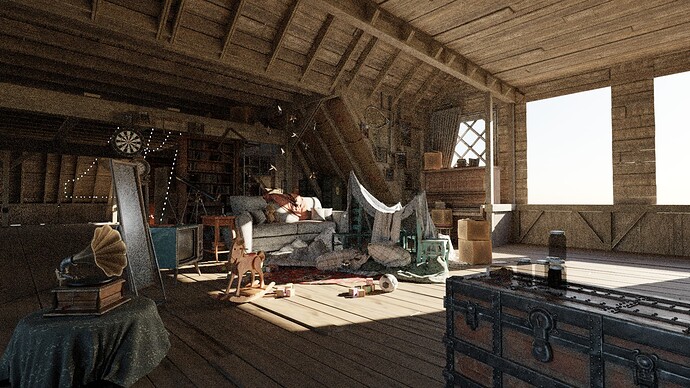Weekly Update #12 (8/29-9/04):
This week, I wrote up my final report and did some final debugging + documentation. I also tested out some scenes - one of the good results is NVIDIA’s attic scene.
At 2 minutes, the original implementation renders the following:
On the other hand, the many lights sampling algorithm renders the following:
There’s already noticeably less noise in this render (my final report also has a render after 30 minutes, where the MLS implementation also generally produces less noise). That said, it seems like the Bistro scene has some more work to do now that splitting has been introduced. However, keep in mind that there should be lots of room for optimizations!
Future Work
As GSoC comes to a close (and I resume classes), I don’t expect to be able to do much work for a while. I hope I’ve provided enough documentation for other contributors to pick it up, which I also plan to do over the winter.
In general, I’m very grateful to everyone who has shown interest and supported this project. The Blender developer community went above and beyond my expectations, and the continued support really helped me out. Thank you all - I hope I can return the favor someday!

